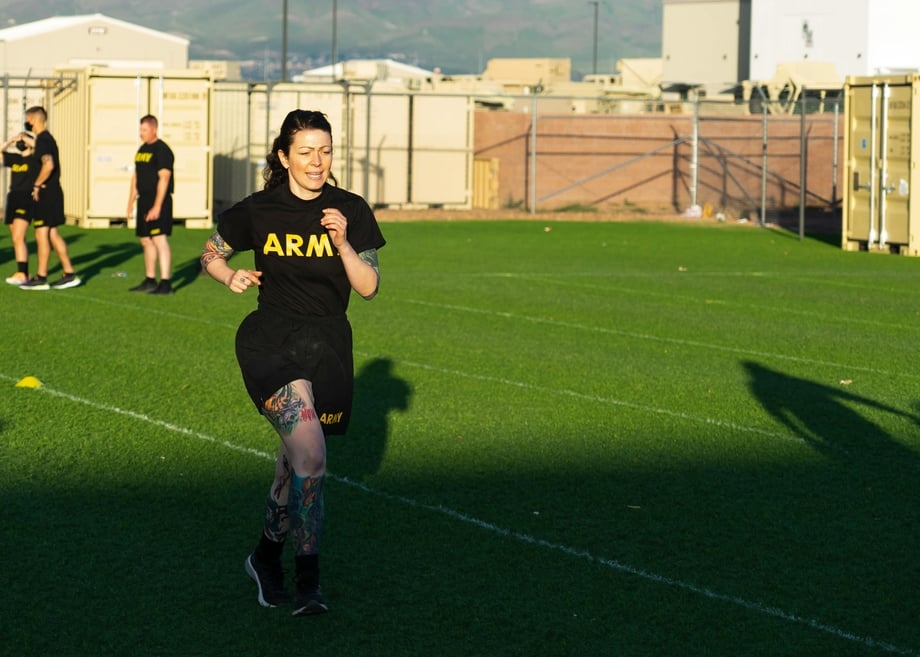Every Veterans Day, our nation pauses to honor those who have served. But this year, as a combat veteran and ammunition specialist who deployed to Iraq, I find myself reflecting not only on the meaning of service but also on how fragile progress has been for women who choose to serve.
Women have worn the uniform since the Revolutionary War, yet the fight for equal treatment within the military has been slow and hard-won. We’ve had to prove our competence, our strength, and our leadership at every step. We’ve more than earned our places through grit, discipline, and sacrifice.
,
Stay Updated
Keep up with the League. Receive emails to your inbox!
,
That’s why it’s so alarming to see recent actions by the current administration that threaten to turn back the clock on gender equity in the armed forces.
Rolling Back Hard-Won Progress
In September 2025, Defense Secretary Pete Hegseth terminated the Defense Advisory Committee on Women in the Services (DACOWITS), describing it as advancing a “divisive feminist agenda.” The committee, established in 1951, had made more than 1,100 recommendations over its lifetime — many adopted by the Pentagon to improve the recruitment, retention, and well-being of women in uniform. Reuters and Military Times both reported that its dissolution removes a vital institutional voice for women’s equity within the Department of Defense.
,

,
Another key shift came in March 2025, when Hegseth ordered that fitness standards for combat jobs become gender-neutral. On paper, that might sound fair. In practice, critics say the change could disproportionately exclude women from specialized roles, since the new standards revert to the “highest male standard only,” according to Task & Purpose.
Perhaps most concerning for accountability, a new memo dubbed “No More Walking on Eggshells” proposes restricting Equal Opportunity complaints, discouraging anonymous filings, and “liberating commanders” from external oversight. Business Insider reports that many servicewomen fear this change will make it harder to report harassment or discrimination safely.
What These Changes Mean on the Ground
When I served as an ammunition specialist, I was one of only four women in my Army unit of more than a hundred soldiers. We carried the same loads, faced the same dangers, and proved that capability was never the problem — policy and culture were. That’s why dismantling oversight bodies like DACOWITS or weakening harassment protections matters so much. These aren’t abstract changes; they remove opportunities that women and our allies fought hard to create.
,
,
The barriers we faced weren’t about strength or skill. They were about systems; policies that too often treated women’s service as an afterthought. That’s why the structures created to protect and empower women in uniform are so important. They gave visibility to our challenges and accountability to the institutions meant to support us.
When those systems are dismantled, women lose more than resources; we lose the signal that our service is valued. It sends a chilling message to young women who might be considering military service: that the doors we fought to open are being quietly closed again.
Why the League of Women Voters Should Care
The League’s mission is to defend democracy — and that includes defending the people who serve to protect it. Women’s full participation in the military is not a niche issue; it’s a matter of democratic equity. When women’s voices are excluded from the nation’s security institutions, our democracy is weaker, not stronger.
,

,
League members can take action by:
- Urging Congress to reinstate independent advisory bodies like DACOWITS.
- Demanding transparency in fitness and promotion policy changes.
- Supporting legislation that protects reporting mechanisms for harassment and discrimination.
- Uplifting the stories of women veterans whose service and leadership often go unseen.
These steps are part of a larger commitment to equity, representation, and justice, the values at the heart of both democracy and military service.
A Call for Vigilance and Respect
For those of us who’ve worn the uniform, Veterans Day is a reminder of service, sacrifice, and responsibility. Defending democracy doesn’t end when we take off our combat boots. It continues in how we protect the rights of those who come after us.